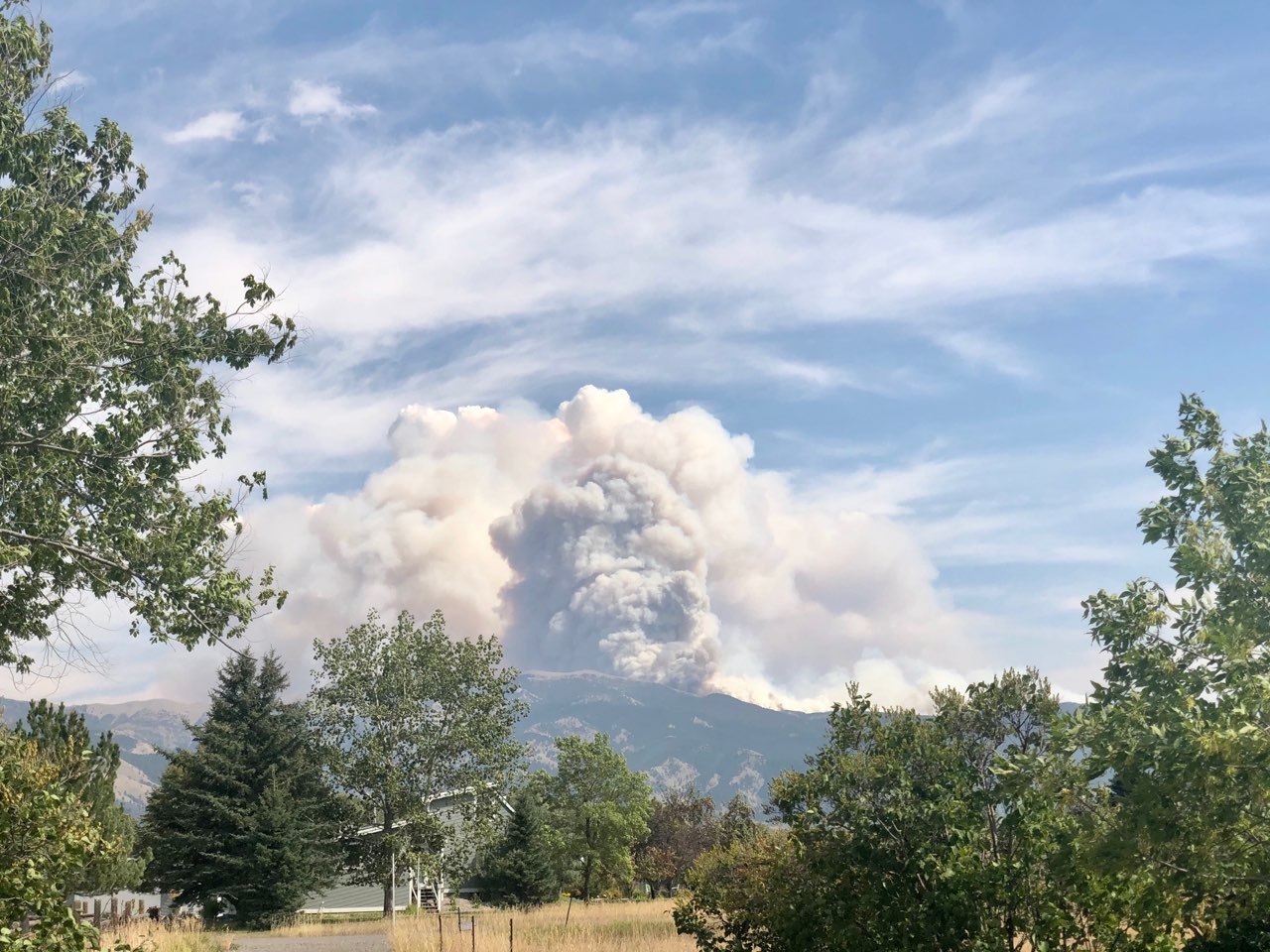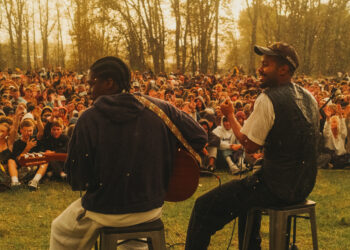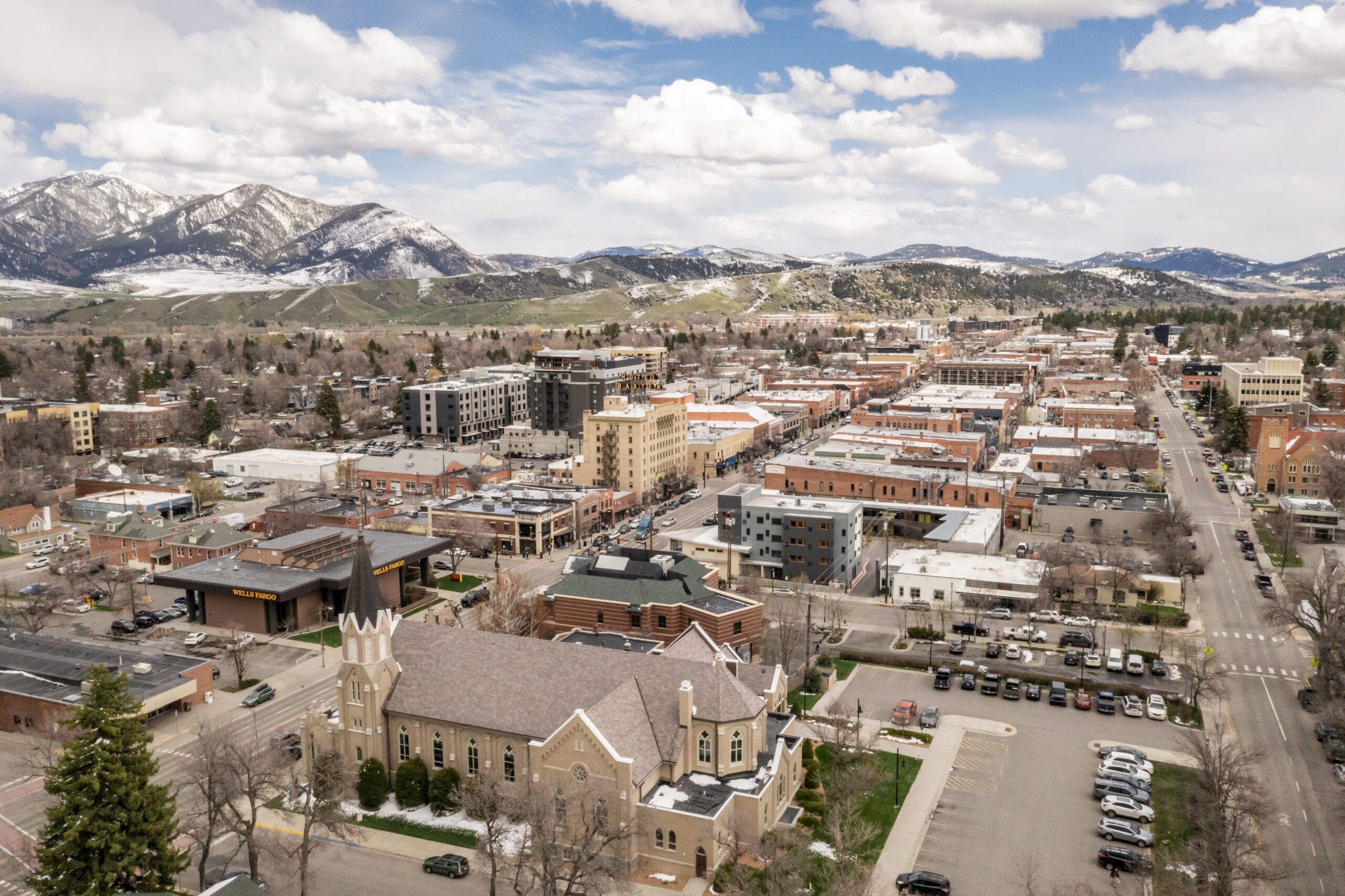How local agencies cooperate and respond to fires
By Gabrielle Gasser EBS STAFF
BIG SKY – This summer, smoke from western wildfires smothered the U.S., many people fled their homes, thousands of structures were destroyed and millions of acres were obliterated.
In Colorado, the Cameron Peak fire recently became the largest in the state’s history according to the Rocky Mountain Area Coordination Center.
According to the Department of Forestry and Fire Protection in California, five out of the six largest wildfires in their history occurred this year.
The number of U.S. acres that wildfires have chewed up in 2020 exceeds the National Interagency Fire Center’s 10-year average by about 2 million acres. As of EBS press time, more than 46,000 fires have burned nearly 8.5 million acres of land so far this year, according to the NIFC.
During the summer of 2020, 63 wildfires burned across the Custer Gallatin National Forest. Of the 36 in the Greater Yellowstone portion of the forest, only two were larger than 10 acres according to Scott Schuster, the Fire Staff Officer for the forest.
Greg Megaard, Fire Chief at the Big Sky Fire Department, noted that 63 fires was low, “especially with how dry the conditions were this summer.”
In the Big Sky fire district, Chief Megaard said there were roughly 10-12 very small fires this summer.
The 2020 North American fire season has been staggering in scale. Fire departments and other agencies across the country have met the record-breaking burns with a coordinated and collaborative response. In southwest Montana, Chief Megaard is glad it wasn’t worse.
“We were extremely lucky here,” Megaard said, “people really paid attention.”
Part of fighting fire in rural areas like Big Sky is being a good neighbor. Fire suppression is a team effort and fire responders often provide support or “mutual aid” beyond their own jurisdictions. As Seth Barker, a Battalion Chief and Chief Training Officer with BSFD, puts it, “… we really try to help our neighbors out.”
BSFD has a variety of mutual aid partners in the area. Each of these partners are in neighboring jurisdictions and can call on each other for help any time.
One such partner is the Custer Gallatin. “We have an agreement with the Forest Service that they come help us out if there is any wildland fire near our town and they get on scene very quickly and are very professional and good to work with,” Barker said.
On Oct. 10, the BSFD responded to a fire right near mile marker 39 on U.S. Highway 191. The blaze began when a powerful wind cell took down a powerline.
Though this location was technically outside of BSFD’s district, the department and mutual aid partners responded and managed the situation until the Forest Service arrived. Barker said they were able to contain the fire to under a half-acre and secure the area. “The potential threat of that fire would have been catastrophic,” he said “because this was before we started getting all the rain.”
This September, the Bridger Foothills Fire was one of two in the Custer Gallatin that exceeded 10 acres, and it was the only wildfire this season that took more than a couple days to suppress.
“It wasn’t an unusual fire season for us, it was just the unfortunate location of the Bridger Foothills Fire,” said Scott Schuster, fire staff officer with the Custer Gallatin.
A holdover lightning strike on Sept. 4 started the Bridger Foothills Fire approximately three miles northeast of Bozeman near the “M” trail. In total, the fire burned 8,224 acres and was not fully contained until noon on Oct. 12, according to the interagency Incident Information System.
The response to the Bridger Foothills Fire was far reaching in that, according to Schuster, even a fire engine from Florida eventually joined the effort. The coordination of the suppression effort included the Forest Service as well as BSFD, alongside seven other local agencies.
The response to any fire is coordinated by an on-site Incident Commander, which in the case of the Bridger Foothills Fire was a representative from the Bozeman Ranger District. The IC then evaluates how successful the suppression of the fire was and orders more resources through dispatch as necessary.
After the first day of the Bridger Foothills blaze, fuel and erratic wind conditions necessitated more support, according to Schuster.
“Once it becomes a large fire, there’s folks from all across the country that respond and represent other federal agencies, other state and local agencies, private contractors, a whole gamut of folks,” he said.
Many fire response collaborations this season have been reciprocal. While numerous outside resources supported fire suppression efforts in Bozeman this summer, local agencies also lent a hand on the West Coast.
“We’ve gone to California once this year with full engines and crew and a command staff,” Barker said. “That’s the third year in a row we have gone to help out in California.”
The Custer Gallatin National Forest coordinates with area agencies to respond to fires, including the National Park Service the Bureau of Land Management and other national forests.
“We spend a tremendous amount of time assessing the risk to the public and firefighters and balancing that when we decide exactly what we are going to do and how we are going to respond,” Schuster said.
In addition to working as a team to suppress fires, federal agencies like the Forest Service also spend a lot of time evaluating risk, implementing national fire policies and mitigating hazardous fuels through thinning, education and coordination with other agencies.
BSFD works on hazardous fuel mitigation with grant funds and through home consultations. “Once a year we do a grant-funded program that puts four to five firefighters on people’s property and helps them to mitigate some of their wildland hazard,” Barker said.
The outlook for the rest of the fire season in Montana is normal, according to NIFC’s Wildland Fire Potential Outlook released in early October. Regardless of the danger, Montana is well prepared to meet any new fire challenges, according to Gov. Steve Bullock, who announced on Aug. 17 that the fire fund for the state reached its statutory maximum.
On Aug. 15, nearly $47 million was transferred from the state’s general fund to the suppression fund increasing it to its maximum of $101.5 million for the first time in history.
Big Sky has been lucky in that there have been very few blazes, but Chief Megaard still advises caution.
“The potential is still here; it is certainly less than what it was when we had an extreme high fire danger a few weeks ago. I would say we have a low to moderate danger now, but things can still burn.”














